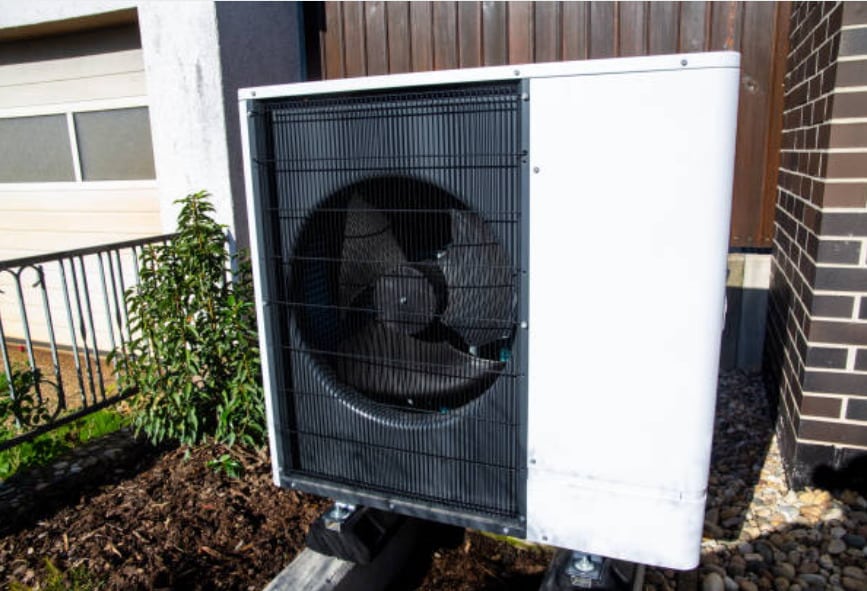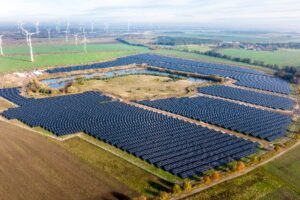Geothermal Heat Pumps: Harnessing Earth’s Energy

Imagine a world where your heating and cooling needs are met efficiently, sustainably, and with minimal impact on the environment. Welcome to the world of geothermal heat pumps, a technology that taps into the Earth’s natural energy to provide year-round comfort. In this comprehensive article, we’ll explore the fascinating realm of geothermal heat pumps, uncovering how they work, their environmental benefits, and why they’re gaining recognition as a vital player in the realm of renewable energy.
The Geothermal Heat Pump Basics
Geothermal heat pumps, often referred to as ground-source heat pumps, are a heating and cooling technology that takes advantage of the Earth’s relatively stable temperature below the surface. Unlike traditional heating and cooling systems that rely on burning fossil fuels or electricity, geothermal heat pumps use the Earth’s natural heat to regulate indoor temperatures.
How Geothermal Heat Pumps Work
At the heart of a geothermal heat pump system is a loop of pipes buried underground, typically in a vertical or horizontal configuration, depending on available space and geological conditions. This loop is filled with a heat transfer fluid, which circulates through the pipes.
In the winter, when you need heating, the fluid absorbs heat from the Earth as it circulates through the loop. This heat is then transferred to a heat exchanger in the heat pump, where it’s used to warm the air or water that’s circulated through your home’s heating system. In the summer, the process is reversed, with the heat pump removing heat from your home and transferring it back into the Earth, effectively cooling your living space.
The Environmental Benefits of Geothermal Heat Pumps
Energy Efficiency
Geothermal heat pumps are highly efficient, often providing up to four units of heating or cooling for every unit of electricity they consume. This high efficiency translates to significant energy savings and reduced greenhouse gas emissions.
Renewable Energy Source
Unlike fossil fuels, which are finite and contribute to climate change, the Earth’s heat is a renewable resource that can be harnessed indefinitely. Geothermal heat pumps tap into this sustainable energy source.
Reduced Carbon Footprint
Geothermal heat pumps produce fewer greenhouse gas emissions compared to traditional heating and cooling systems. By reducing your reliance on fossil fuels or electric resistance heating, you can significantly shrink your carbon footprint.
Lower Operating Costs
While the initial installation cost of a geothermal heat pump system can be higher than traditional systems, the long-term operating costs are typically lower due to their energy efficiency. Over time, you can recoup your investment through energy savings.
Quiet and Clean Operation
Geothermal heat pumps operate quietly and without the combustion processes associated with fossil fuel systems. This means cleaner indoor air quality and reduced noise pollution.
Types of Geothermal Heat Pump Systems
There are several configurations of geothermal heat pump systems to suit different environments and needs:
Closed-Loop Systems
These systems use a closed loop of pipes filled with a heat transfer fluid, such as antifreeze, to exchange heat with the Earth. The fluid circulates through the loop and transfers heat to or from the ground.
Open-Loop Systems
Open-loop systems use groundwater from a well as the heat exchange fluid. After heat exchange, the water is discharged back into the ground or a surface water body. These systems are less common due to water availability and environmental considerations.
Hybrid Systems
Hybrid systems combine geothermal heat pumps with other heating or cooling sources, such as a gas furnace or solar panels, to provide flexibility and efficiency.
Installation Considerations
The successful installation of a geothermal heat pump system depends on factors like your location, available land or space, geological conditions, and budget. It’s essential to work with experienced professionals who can assess your specific needs and customize a system that maximizes efficiency and cost-effectiveness.
Geothermal Heat Pumps: Overcoming Challenges and Expanding Horizons
As geothermal heat pumps gain popularity for their sustainability and efficiency, they also face certain challenges and limitations. However, ongoing research and technological advancements are working to overcome these hurdles and expand the horizons of geothermal energy.
Challenges of Geothermal Heat Pumps
Upfront Costs
The initial installation cost of a geothermal heat pump system can be higher compared to traditional heating and cooling systems. This cost includes drilling or excavation for the ground loop and installing the heat pump unit. However, the long-term energy savings often offset the initial investment.
Location-Dependent
The feasibility of geothermal systems can vary based on geographical location and soil conditions. Some regions may have limited access to suitable land for ground loops, making installation more challenging.
Space Requirements
Horizontal ground loops require a significant amount of land area, which may not be available for some homeowners. Vertical loops, although more space-efficient, can be costlier due to drilling depth.

Horizontal ground loops require a significant amount of land area, image source: Unsplash
Maintenance and Repairs
Geothermal heat pump systems are generally low-maintenance, but repairs or replacements of components can be costly. Regular maintenance is essential to ensure the system’s longevity and efficiency.
Advancements and Future Prospects
Despite these challenges, geothermal heat pumps continue to evolve and expand their potential. Here are some developments and future prospects for this technology:
Advanced Materials
Ongoing research focuses on developing advanced materials for heat exchangers and ground loop pipes to enhance system performance and longevity while reducing costs.
Hybrid Systems
Combining geothermal heat pumps combined with other renewable energy sources like solar panels or wind turbines can further increase system efficiency and reduce reliance on the grid.

Geothermal heat pump indoor units, image source: Unsplash
Improved Drilling Technology
Advancements in drilling technology can make vertical loop installation more cost-effective and accessible, even in areas with challenging geological conditions.
Government Incentives
Many governments offer incentives, tax credits, and rebates to encourage the adoption of geothermal heat pumps. These incentives can significantly reduce the upfront costs for homeowners and businesses.
District Heating and Cooling
In some urban areas, district heating and cooling systems are being developed, where a central geothermal heat pump plant serves multiple buildings. This approach can be more energy-efficient and cost-effective on a larger scale.
Research into Deep Geothermal
Deep geothermal energy, which taps into much deeper Earth layers for heat extraction, is being explored as a potential source of renewable energy. This technology could provide even more significant benefits in terms of energy generation.
Environmental Impact and Sustainability
One of the most compelling aspects of geothermal heat pumps is their minimal environmental impact. Unlike fossil fuels, which release greenhouse gases and contribute to climate change, geothermal systems produce virtually no direct emissions. They rely on a stable and renewable heat source, reducing the reliance on non-renewable resources.
Furthermore, geothermal energy is available 24/7, making it a reliable and consistent source of heating and cooling. This stability can help reduce energy demand fluctuations and provide a more resilient energy infrastructure.
Conclusion: Geothermal Heat Pumps – A Sustainable Future Awaits
Geothermal heat pumps represent a sustainable and environmentally friendly solution to our heating and cooling needs. While they do come with some initial challenges and costs, their long-term benefits in terms of energy efficiency, cost savings, and reduced carbon footprint are increasingly recognized and valued.
As technology continues to advance and adoption rates grow, we can look forward to a future where geothermal heat pumps play a more significant role in the global transition to clean and renewable energy sources. With ongoing research, innovative developments, and supportive government policies, geothermal heat pumps are poised to offer sustainable comfort and contribute to a more sustainable world.







